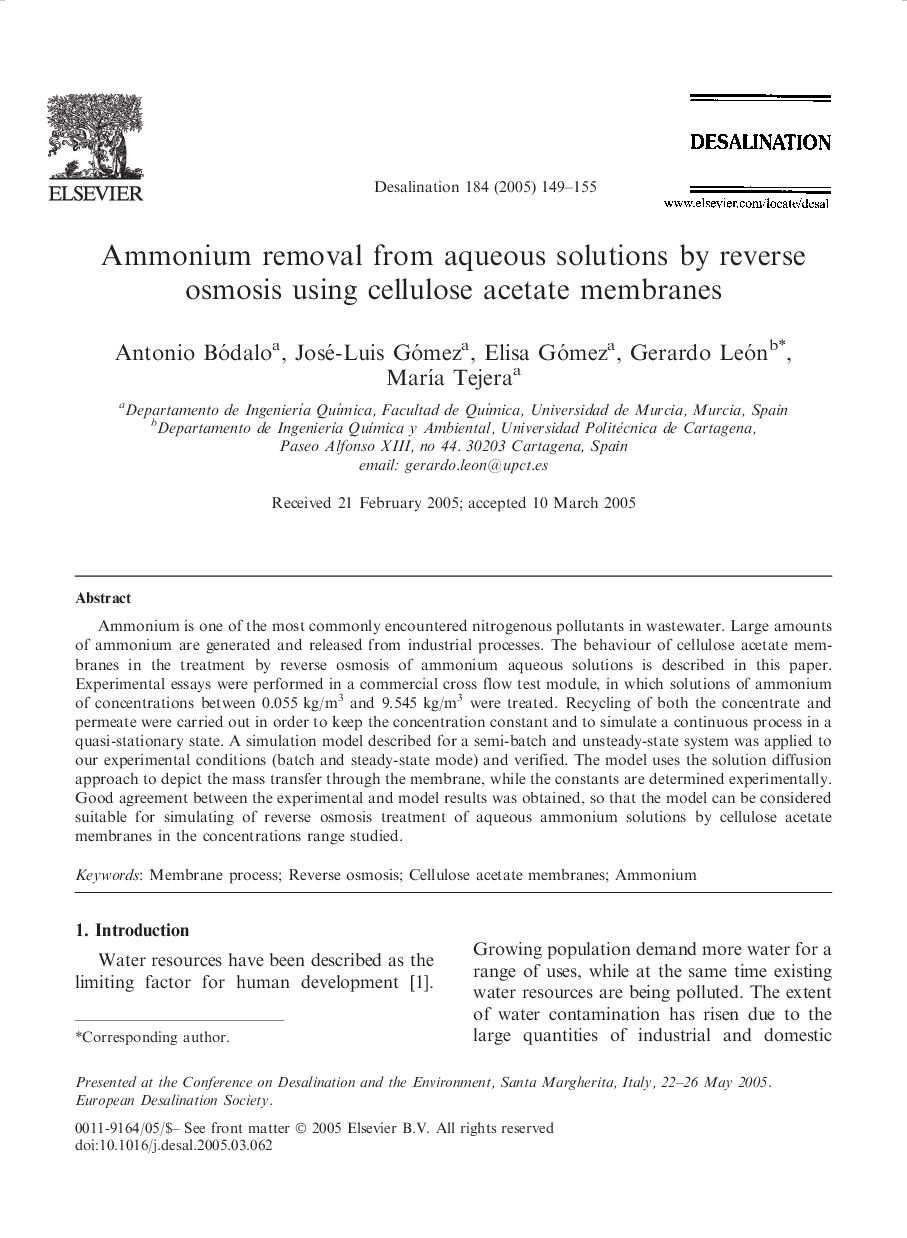| Article ID | Journal | Published Year | Pages | File Type |
|---|---|---|---|---|
| 9680870 | Desalination | 2005 | 7 Pages |
Abstract
Ammonium is one of the most commonly encountered nitrogenous pollutants in wastewater. Large amounts of ammonium are generated and released from industrial processes. The behaviour of cellulose acetate membranes in the treatment by reverse osmosis of ammonium aqueous solutions is described in this paper. Experimental essays were performed in a commercial cross flow test module, in which solutions of ammonium of concentrations between 0.055 kg/m3 and 9.545 kg/m3 were treated. Recycling of both the concentrate and permeate were carried out in order to keep the concentration constant and to simulate a continuous process in a quasi-stationary state. A simulation model described for a semi-batch and unsteady-state system was applied to our experimental conditions (batch and steady-state mode) and verified. The model uses the solution diffusion approach to depict the mass transfer through the membrane, while the constants are determined experimentally. Good agreement between the experimental and model results was obtained, so that the model can be considered suitable for simulating of reverse osmosis treatment of aqueous ammonium solutions by cellulose acetate membranes in the concentrations range studied.
Related Topics
Physical Sciences and Engineering
Chemical Engineering
Filtration and Separation
Authors
Antonio Bódalo, José-Luis Gómez, Elisa Gómez, Gerardo León, MarÃa Tejera,
